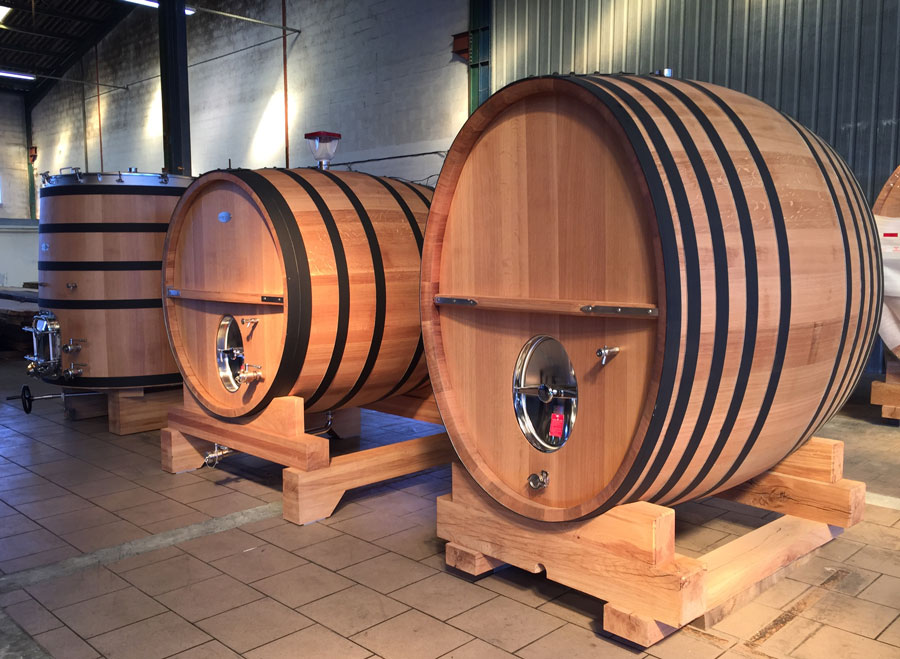
In the July issue of Wine Business Monthly, results were published from a Seguin Moreau trial that evaluated aging Sauvignon Blanc in oak casks versus other aging vessels. A 2008 Bordeaux Sauvignon Blanc was aged in 50 hectoliter new oak casks, 4 hectoliter stainless steel tanks, 225L new French oak barrels and 225L twice-used French oak barrels. The vessels were analyzed after three, six and ten months of aging.
The results were as follows:
- Volatile thiols, glutathione and oak compounds were analyzed. Large casks and stainless steel tanks measured for higher levels of 3-MH (volatile thiol) than the used and new barrels, therefore the used and new barrels showed less fruitiness.
- Levels of glutathione (helps maintain Sauvignon Blanc’s characteristic notes and color) decreased significantly more over time in barrels than they did in oak casks and stainless steel tanks. The assumption was that the ellagic tannins from the barrels (even used) reduced the glutathione content as the wine remained longer in the vessels.
- For oak compounds, eugenol, vanillin and whisky lactone molecules measured were highest in the wine aged in new 225L barrels. And less of these compounds were found in the oak casks than the twice-used French barrels.
- At the end of the aging period, a panel of expert tasters concluded that the wines aged in new 225L barrels were the least expressive in terms of varietal characteristics, and the wines aged in oak casks were the best for expressing varietal flavors and aromas.
The conclusion was that if the goal is to preserve the fruity or varietal characteristics of Sauvignon Blanc, the large oak cask is the preferred vessel. The application of this type of aging for other aromatic white varietals was also recommended: Riesling, Gros Manseng or Rhone Valley white wines. And it was mentioned that large oak containers do not take away from a wine’s aging potential.
Although it wasn’t evaluated in this study, I wanted to mention the use of water bent 225L or 228L barrels on white grapes such as Sauvignon Blanc. With water bending (most barrels are bent by fire), tannins are much softer due to both the hot water soak, which extracts the harsher tannins, and the lower temperature of the staves during toasting, which degrades more tannins than a medium level heat. In addition, very little carmelization occurs when toasting at the lower temperatures. The result is a lower impact of oak compounds (less oaky/toasty aromas) and therefore preservation of fruity aromas and varietal characteristics, as well as a soft mouthfeel. It’s one of my preferred vessels for aging white wine.
